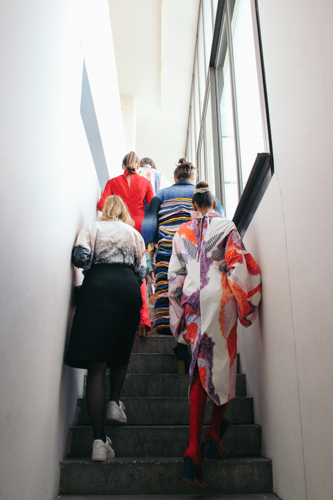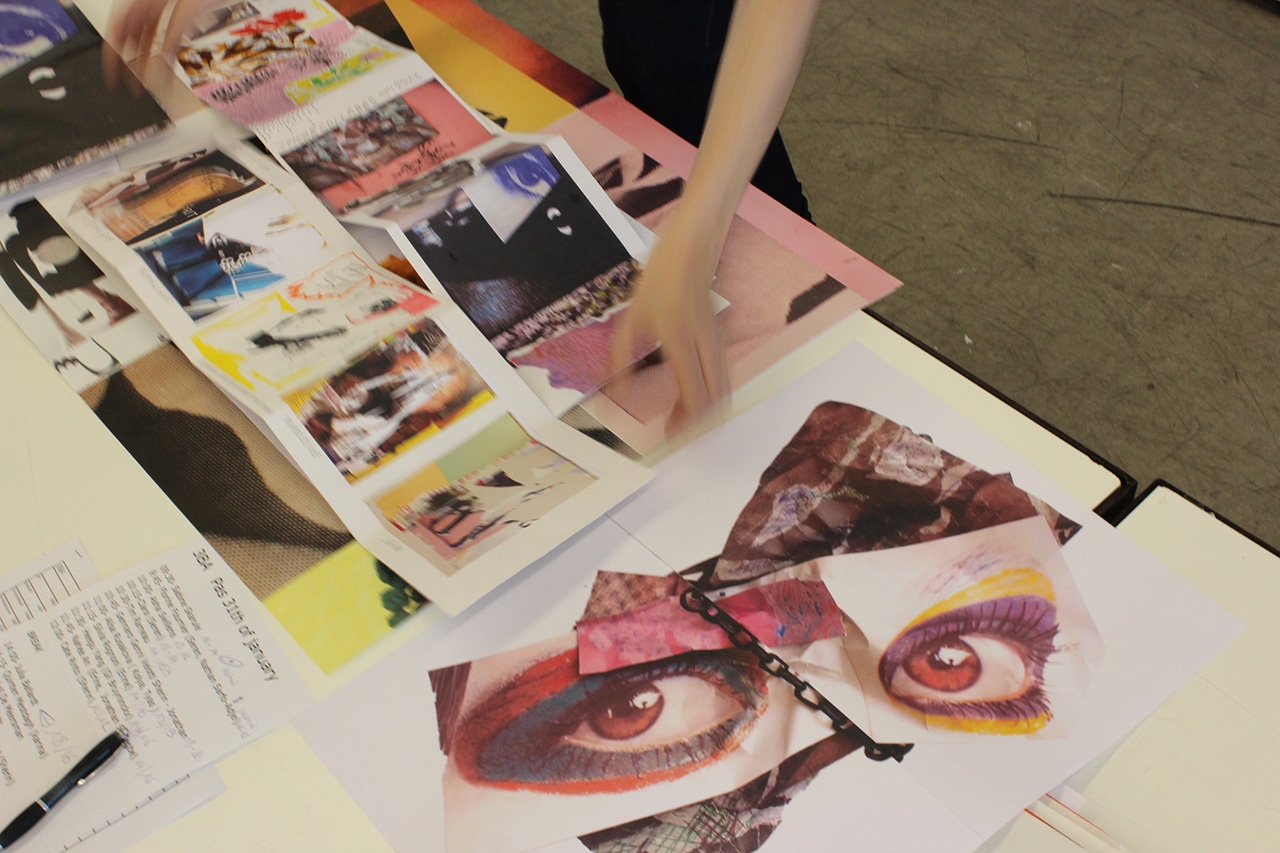STUDY PROGRAMME
1ST BACHELOR | The 1st Bachelor in fashion design is composed around three main artistic subjects. The most important course is the one of fashion design. The other two main courses are graphics and tailoring/ pattern design. In addition to these three main subjects, the curriculum contains two specific subjects. One of these is the history of dress, starting with the earliest design courses.
The course on fashion and textile forecasting familiarizes the students with various forms of communication in the fashion industry: professional jargon, material and colour sample charts and descriptions of general trends and impressions.
Various assignments are given in all these artistic disciplines. The students are expected to work on them using as much creativity as possible and with an emphasis on experiment model, a unique discipline which is taught in all departments and years.

2ND BACHELOR | The curriculum further contains theoretical courses covering the humanities and artistic-theoretical sciences such as the history of art, world literature, philosophy, sociology and psychology.
The same three main artistic subjects are taught in the second year. Fashion design, graphics and tailoring/ pattern design. From the rich history of dress until 1940, each of the students has to choose a historical figure with a costume typical for the period.
Then, they have to do thorough research on the historical figure they have chosen and on his or her period, including the political, cultural and social 
The drawing course covers two specific subjects: the history of dress from the Renaissance to the present, and modelling/ draping. In this course the students acquire the skill of modelling and draping, working with materials directly on live models or dummies, without the aid of pencil and pattern paper. Not that the two disciplines are incompatible, quite on the contrary: by using materials to create forms and volumes directly, the students acquire a more direct knowledge of the art of tailoring, which they can then use in two-dimensional pattern drawing.
Seminars on shoemaking, millinery or glove-making and other projects add variety to the programme and may also be useful in the students’ later careers. Finally there are theoretical subjects: contemporary art, art history, philosophy, sociology and psychology.

3RD BACHELOR | Third-year students are required to present a collection of 8 silhouettes by the end of the year. This collection must be based on a preliminary study of either a European or a non-European culture. Again, the recreation of a typical costume or dress is seen as a necessary period of contemplation before starting to design the individual collection itself.
MASTERS | The final year is almost entirely devoted to the final collection which is to include a minimum of 12 silhouettes.
In this year, the students are expected to display a synthesis of all the skills and techniques they have acquired. The students are given complete freedom in selecting their source of inspiration: a favourite artist, a social or political question, a fascinating period in history. In order to have a fully-fledged all-round collection at the end of the year, the students have to start planning and designing very early on in the academic year.
Final-year students need to draw on all their organisational skills and plan everything well right from the start. The outcome is to be the crown on four years of hard work.
The final-year collections must reflect both the spirit of our times and the designer’s position with regard to prevailing trends.
The approaching reality of professional life means that students become preoccupied with practical questions. Therefore workshops are organised with fashion professionals throughout the year.

